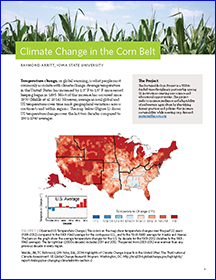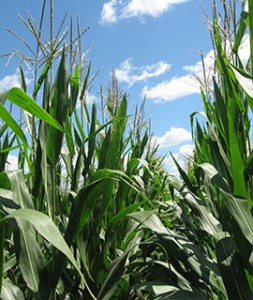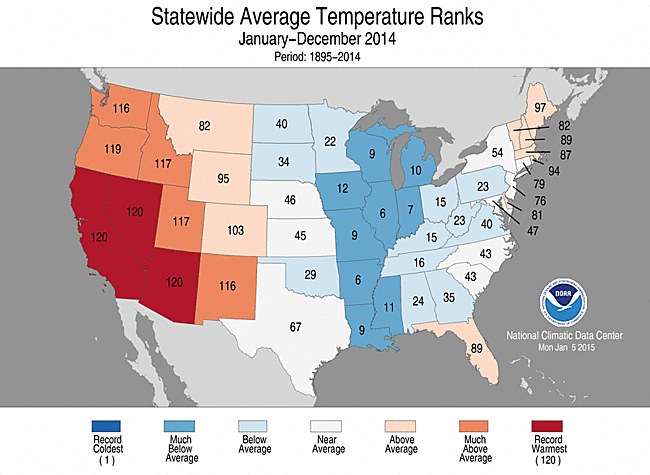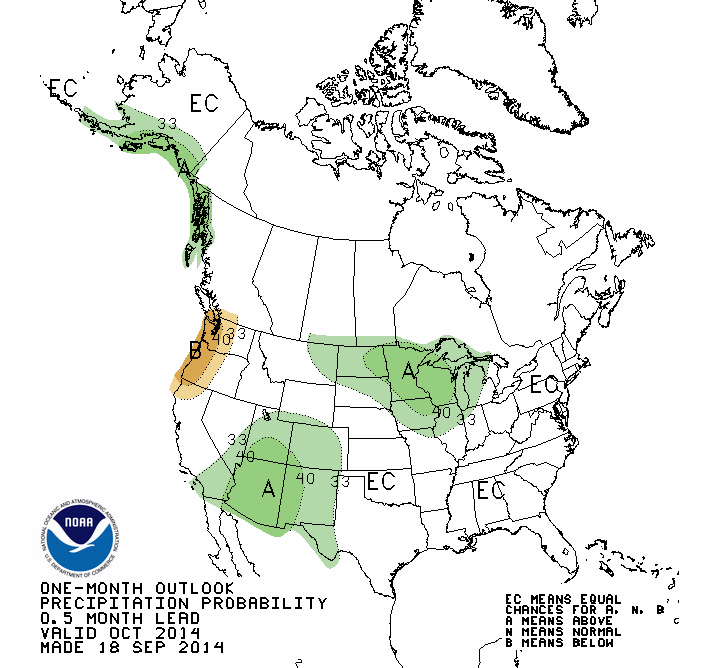 Researchers with the Climate and Corn-based Cropping Systems Coordinated Agricultural Project (commonly known as the Sustainable Corn Project) have documented 130 findings. This new publication of findings explains how climate change is impacting and will continue to impact weather in the Corn Belt. Author Raymond Arritt’s research encompasses mesoscale meteorology, regional climate, and aerobiology in the Departments of Agronomy and Geological and Atmospheric Sciences at Iowa State University, Ames, Iowa. You can download the report HERE.
Researchers with the Climate and Corn-based Cropping Systems Coordinated Agricultural Project (commonly known as the Sustainable Corn Project) have documented 130 findings. This new publication of findings explains how climate change is impacting and will continue to impact weather in the Corn Belt. Author Raymond Arritt’s research encompasses mesoscale meteorology, regional climate, and aerobiology in the Departments of Agronomy and Geological and Atmospheric Sciences at Iowa State University, Ames, Iowa. You can download the report HERE.
Category Archives: Weather and Agriculture
Corn Project Findings
 Researchers with the Climate and Corn-based Cropping Systems Coordinated Agricultural Project (commonly known as the Sustainable Corn Project) have documented 130 findings, some of which will be explored during a Feb. 11 webinar, open to the public through Iowa State University
Researchers with the Climate and Corn-based Cropping Systems Coordinated Agricultural Project (commonly known as the Sustainable Corn Project) have documented 130 findings, some of which will be explored during a Feb. 11 webinar, open to the public through Iowa State University
The five-year USDA-National Institute of Food and Agriculture research project is nearing completion, led by Lois Wright Morton, a professor of sociology at Iowa State University. In 2011, Morton convened 140 researchers from 10 land-grant universities in the Corn Belt and USDA Agricultural Research Service, to begin a study of farmers’ perceptions and farm management practices.
The practices had the potential to provide resilience in times of drought, reduce soil and nutrient losses under saturated soil conditions, decrease field nitrogen losses, retain carbon in the soil and ensure crop and soil productivity. The researchers collected measurements at 35 field sites with diverse landscapes and soils, and from surveys of thousands of Midwestern farmers, entering all the data into one database for the team’s use. Continue reading
First Fall Freeze?
Dennis Todey, South Dakota State Climatologist
Pat Guinan, Missouri State Climatologist
This time of year questions about frost/freeze potential are common as producers look for a little more time for crops to mature, or gardeners and horticultural interests hope for some extra days to collect a few more tomatoes. Projecting specific frost dates are difficult beyond using models out to 1-2 weeks. Thus, climatologies and current crop progress become very important.
This year, current crop progress varies greatly across the Plains and Midwest because of spring and early summer planting conditions. Early spring in the northern plains/upper Midwest was quite dry allowing easy planting progress and warm soils before rains started occurring in May. This situation was in large contrast to the southern and eastern parts of the Corn Belt. Continue reading
Corn Belt farmers’ attitudes toward responses to increased weather variability
Climate changes and extreme rain and heat/drought events pose significant challenges to the corn and soybean economy in the Midwestern U.S. In the last decade, the intensity and frequency of droughts and floods in the region have increased, with a record loss of 4 billion bushels recorded in 2012. Farm-level adaptation to climate change is a suitable process of adjustments to potential current and future weather variability. Understanding farmers’ attitudes toward their individual and collective efforts to protect land from increased weather variability can provide valuable lessons for agriculture and climate policy makers and agricultural advisors.
In 2012, a farmer survey carried out by the Sustainable Corn Project (USDA-funded project) in partnership with the Useful to Useable (U2U) project asked 4778 corn farmers from 11 Midwestern states about adaptive responses to increased weather variability. In general, most respondents believed that farmers should take steps to make their operations more resilient (click here to see the fact sheet). One thought-provoking result shows that two-thirds of respondents across all states agreed that farmers should take additional steps to prepare for increased weather variability. According to the survey, a majority of farmers are viewing farm-level adaptation as a necessary step for future sustainability of their farms.
Farmers’ attitudes toward responses to increased weather variability varies across a diverse social and biophysical landscape. For improved understanding of this multiplicity, the farmer survey was stratified by watershed, with random samples of farmers drawn in each of 22 HUC6 watersheds. Watershed-level data can help to inform localized outreach programming. The survey data shows that while 58% farmers agreed that they as individuals should take additional steps to protect land against risks posed by increased weather variability. The level of agreement varied across watersheds, from a low of 47% in Loup watershed (Nebraksa) to a high of 70% in Kaskaskia watershed (Illinois). Higher levels of agreement toward responses to increased weather variability could suggest that more farmers are willing to support adaptive actions.
El Nino and It’s Potential Impact on the Corn Belt
In early May 2015, the Climate Prediction Center reported that weak to moderate El Niño conditions were present in the Pacific Ocean basin, along the equator. Furthermore, there is a greater 90% chance it will continue through summer and a greater than 80% chance it will last through 2015.
Now that El Niño has arrived, it’s influence on the NWS climate outlooks released last Thursday is considerable. For June (first figure, top row), the Southern Plains are expected to have an increased chance of cooler-than-average temperatures. A large part of the US is expected to have an increased chance of wetter-than-average precipitation, including portions of the southern and western Corn Belt.
For the period June-August (first figure, second row), the increased chance for cooler-than-average conditions stretches northward and eastward and includes all of Kansas and Missouri, southern Nebraska and Iowa, and far western Illinois. Continue reading
New Outlooks and Impact on the 2015 Planting Season
As we reach the latter part of April the whole Corn Belt is well into planting season, though corn planting progress is a little slow so far. Several contrasting issues are impacting planting across the Corn Belt and into the Northern and Central Plains.
Planting in much of the eastern Corn Belt has been slowed a little by early season wetness particularly in the southeastern parts (Illinois, Indiana, Missouri and Ohio) where heavier than average precipitation over the last 30-60 days has kept conditions wetter, keeping planters out of the fields. Areas in the Ohio River Valley have seen 150-200% of average precipitation or more in the last 30 days. In contrast much of the plains area (Dakotas to Kansas) has seen much drier conditions leading to increase in coverage on the US Drought Monitor.
The wet conditions have slowed corn planting compared to average across the southern and eastern areas of the Corn Belt. Continue reading
2014 – Warmest Year on Record for World, 15th Coldest for Corn Belt
The year 2014 was considered the warmest year on record for the world, according to three different sources (Japan, NASA, and NOAA). Meanwhile, the Corn Belt experienced the 15th coldest year on record. How can that be?
First of all, here is how 2014 ranked state by state. Many of the Corn Belt states were much below normal, including the three “I” states – Iowa, Illinois, and Indiana as well as Missouri, Michigan, and Wisconsin. It was the 6th coldest year on record for Illinois and in the top 10% for the other states mentioned. The rest of the Corn Belt was below normal as well. Taken together, this was the 15th coldest year on record for the Corn Belt.
New Long Range Outlooks – El Nino
The new long range outlooks from NOAA’s Climate Prediction Center were released this week. There was little new information for much of the Corn Belt except in the shorter term. Let’s review some of the information included.
For January another major pattern shift is expected from late December into at least early January where a period of colder than average conditions is very likely throughout the Northern Plains/Upper Midwest. The 30 day outlook for January reflects that cold area with an increased chance of cold temperatures from the Midwest and central Plains southward. The main issues related to this are on potential winter wheat damage with the cold and to livestock. There are no precipitation indications different from average during January through the region.
For the 90 day outlook (January – March) the outlooks still bank on El Nino having an impact as the outlooks are largely El Nino-looking. Specifically this includes cooler temperatures more likely across the southern part of the Midwest, drier than average more likely over the Great Lakes and Ohio Valley and potential for increased precipitation in the central plains.
The current El Nino status is that Sea Surface temperatures are in El Nino territory, but have not persisted as long as needed for classification as an El Nino. Therefore, El Nino is still pending. Even if El Nino does occur (current probability is 65%) the impacts are likely weaker because this is going to be a weak El Nino. Therefore, whether the CPC outlooks will play out is somewhat in question over the 90 day period.
Looking ahead to the planting season there are no strong indications of issues at this point other than the drier than average area in the outlooks over the Great Lakes/Ohio Valley. Dry soil moisture conditions have impacted much of the corn belt during the fall, which aided harvest. But these soils will need some recharge come spring. The eastern Dakotas and much of Minnesota are reflected as Abnormally Dry (D0) on the US Drought Monitor. At this point most of these issues with dry soils are only potential problems and could actually aid in spring planting allowing soils to warm more quickly and more readily allow field work. Conditions will have to be monitored for changes during the next few months based on the rest of winter precipitation and early spring rainfalls.
What’s up with El Nino?
What’s up with El Nino? Short answer is still not too much. The monthly El Nino summary has been posted today at the Climate Prediction Center (see link below). The basic message is that reaching El Nino conditions is still likely (now 58%) lower than last month. Conditions in the Pacific are still not coming together well in the coupling between ocean and atmosphere. Sea surface temperatures are relatively warm.
The long range outlooks still are based on El Nino conditions occurring (updates will come out in 2 weeks). But the weak El Nino would allow other variables to impact what happens this winter including changes in the North Pacific, North Atlantic and over the pole.
End result is that some things that look like El Nino are still likely to happen during the winter. But the confidence of being a very warm winter in the northern US is somewhat less. The likelihood is lower because of the reduced El Nino chances. And even if El Nino does occur, weak El Ninos have less overall influence and can more easily be modified by other conditions.
See the full outlook from the Climate Prediction Center:
http://www.cpc.ncep.noaa.gov/products/analysis_monitoring/enso_advisory/
NWS Outlook – Wet October for Northern Corn Belt
Much of the northern Corn Belt has an increased chance of above-average precipitation in October, according to the NWS Climate Prediction Center. This follows on the heels of above-average precipitation over the last 30 days across the Corn Belt.
In the map below, areas shaded in green have an increased chance of above-average precipitation in October and include the Dakotas, Minnesota, Wisconsin, Michigan, Iowa, northern Illinois, and northeast Missouri.


